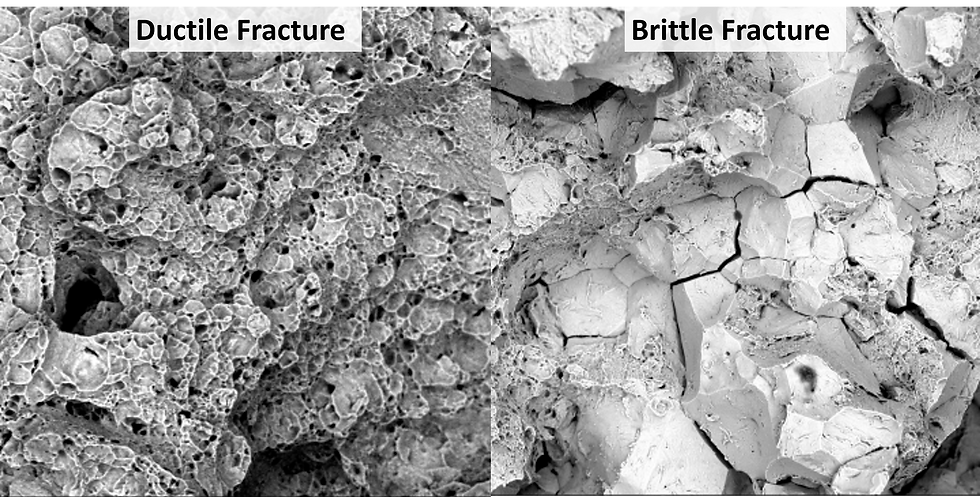Steel Quality Assessment: What can we learn from fractography?
- Devendra Verma
- Apr 6, 2018
- 2 min read
Steel is the backbone of many industries with the total steel consumption of the world growing every year. Most of these industries have suppliers located in different parts of the world. With many suppliers, it becomes essential to perform due diligence in QA & QC of the raw material and finished product to ensure the consistency in the quality of steel-containing manufactured goods. Steel is an alloy composed mainly of iron, carbon and many other strengthening elements further adding to these variabilities.
There are many key parameters that need to be tested to ensure the quality of the material. The major preform qualification parameters are elastic modulus, hardness, strength, yield point, fracture toughness, and ductility to list a few. These listed properties are directly dependent on the microstructure of the material and thus can be checked for qualitative analysis by imaging techniques such as SEM and EDS for elemental composition. The grade of steel varies by the application and is dependent on its different compositional phases such as ferrite, austenite, martensite, bainite and many more.

The steel structures fail in many modes such as buckling, bending, corrosion, and fracture. The fracture propagation is one of the most studied and least understood phenomena from macro to micro scale. The root cause analysis of fracture is often performed post failure in the events of premature failure of the products which can then be related to the manufacturing defects, microstructure, homogeneity and heterogeneity of phases. Fractographic methods are often used for failure analysis in engineering structures, and to determine the root cause of failure in the practice of forensic engineering or failure analysis.
The fractured surface SEM analysis can give us information on different types of failure whether tensile or shear. It provides rich information on the sites of failure such as intergranular, intragranular, ductile failure, brittle failure, dendrites formation, hydrogen cracking and fatigue failures. The simple fracture surface analysis can sometimes be very valuable to understand the processing steps that are leading to failure in products and can subsequently be improved.

As shown in the figures, the SEM images can help us determine very site-specific and accurate cause of the fracture in the material. This information can be fed back to the manufacturer to improve the material quality and improve the fidelity of final products. This information further helps in the design of the products to improve the sites which are prone to higher loads and thus need higher strength. The products can be intentionally designed to fail at specified sites to avoid catastrophic damages such as valves designed to fail at certain threshold pressure. All of this is possible because of the valuable information available relating microstructure to various fracture modes from SEM analysis.
Hopefully, this article shed some light on the advantages of SEM fractography analysis. I will be publishing more articles on the understanding of advancements in mechanical testing at nano-micro scales in the near future. Please feel free to contact me with any questions on material characterization.
References and Notes
Figure 1 is adapted from http://www.dierk-raabe.com/steels-science/




Comments